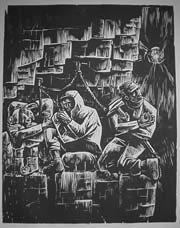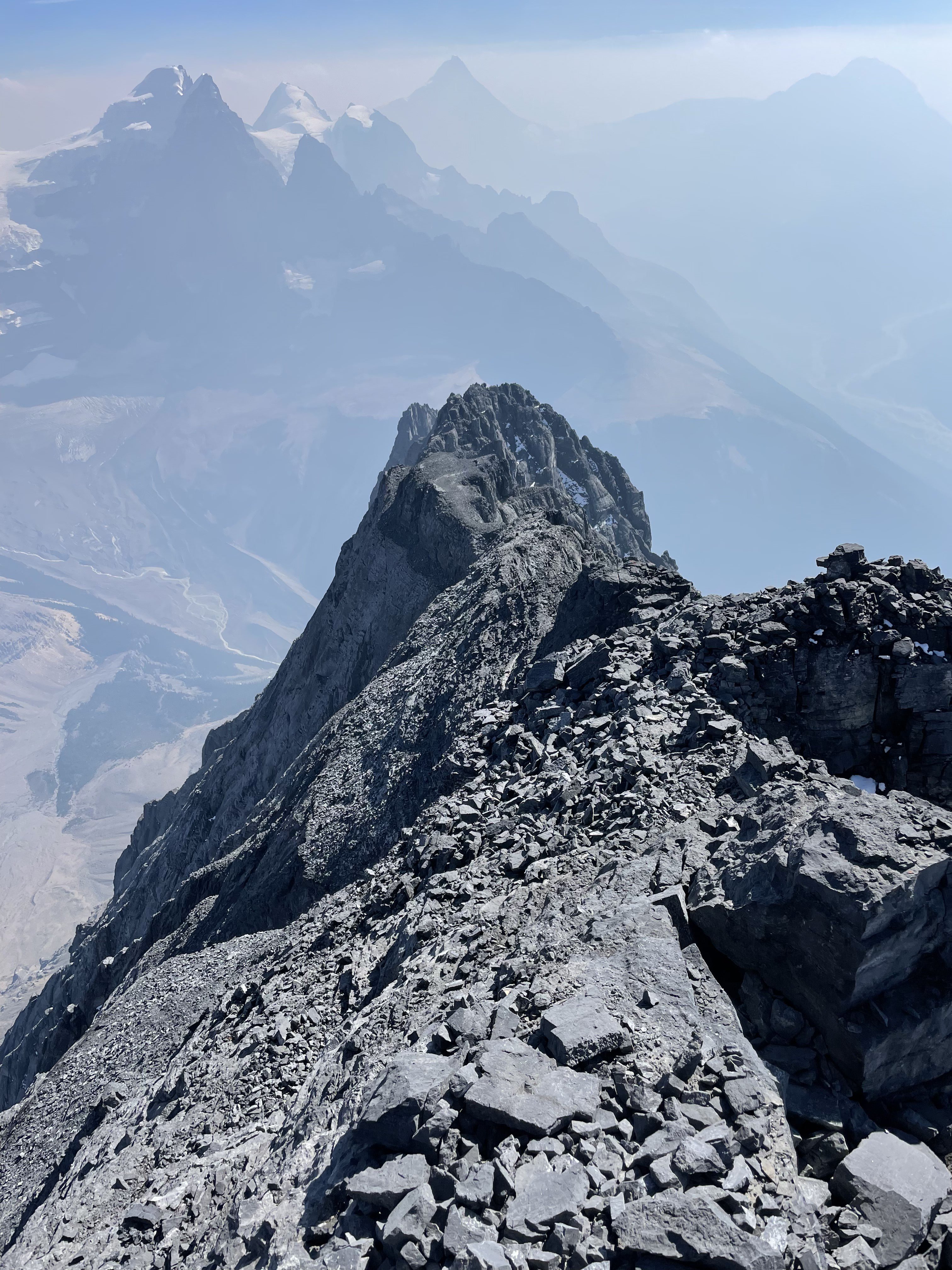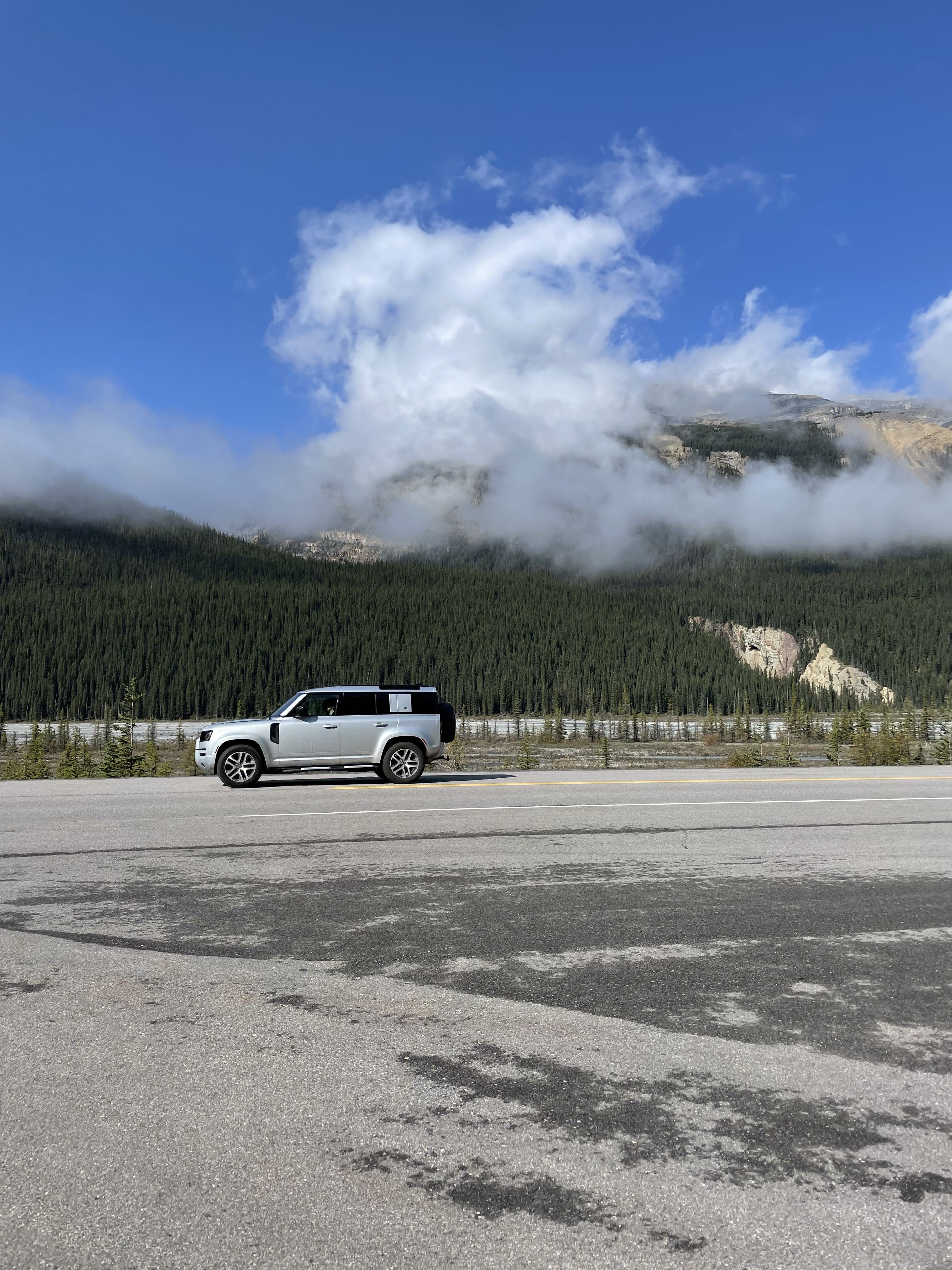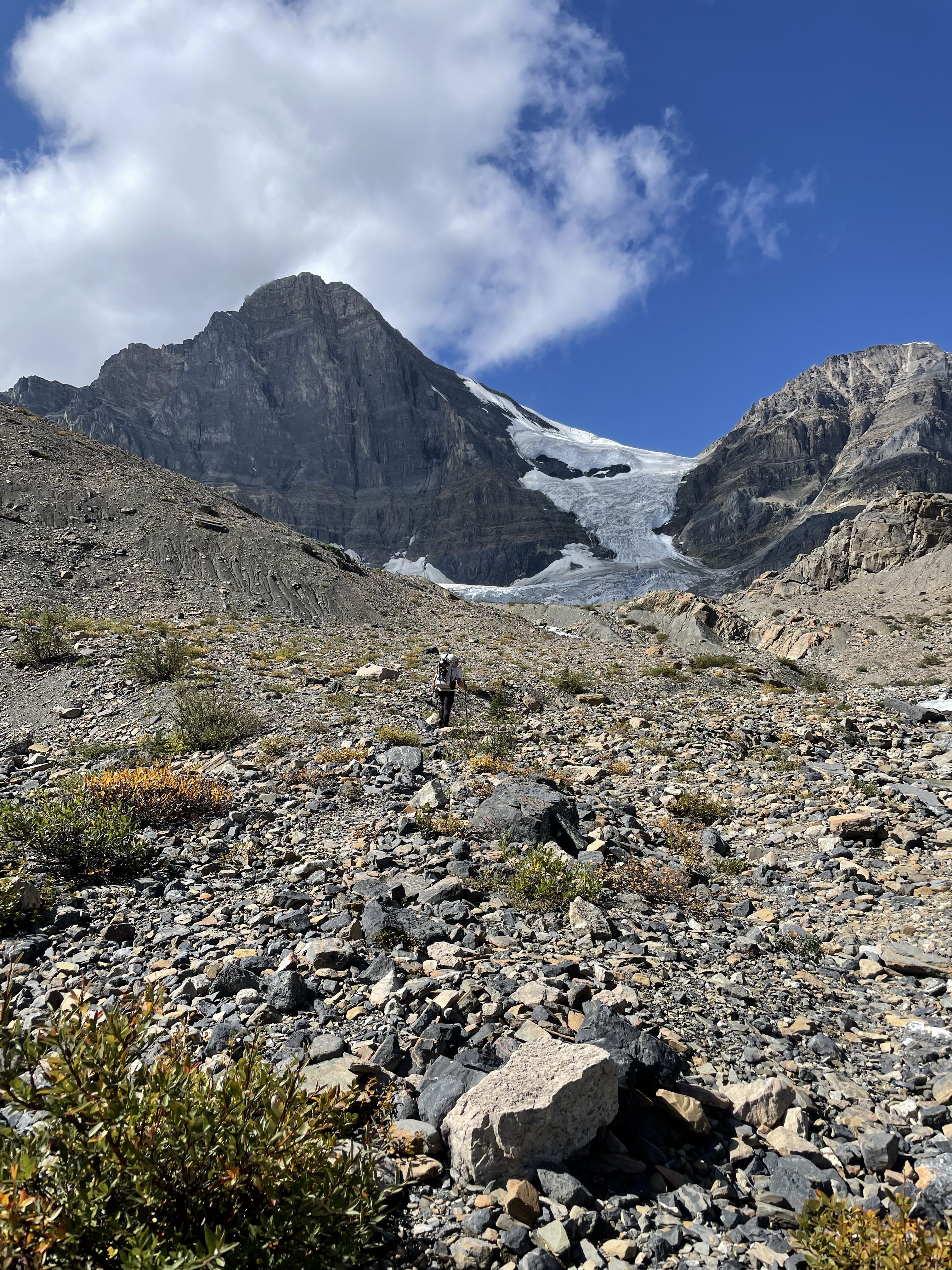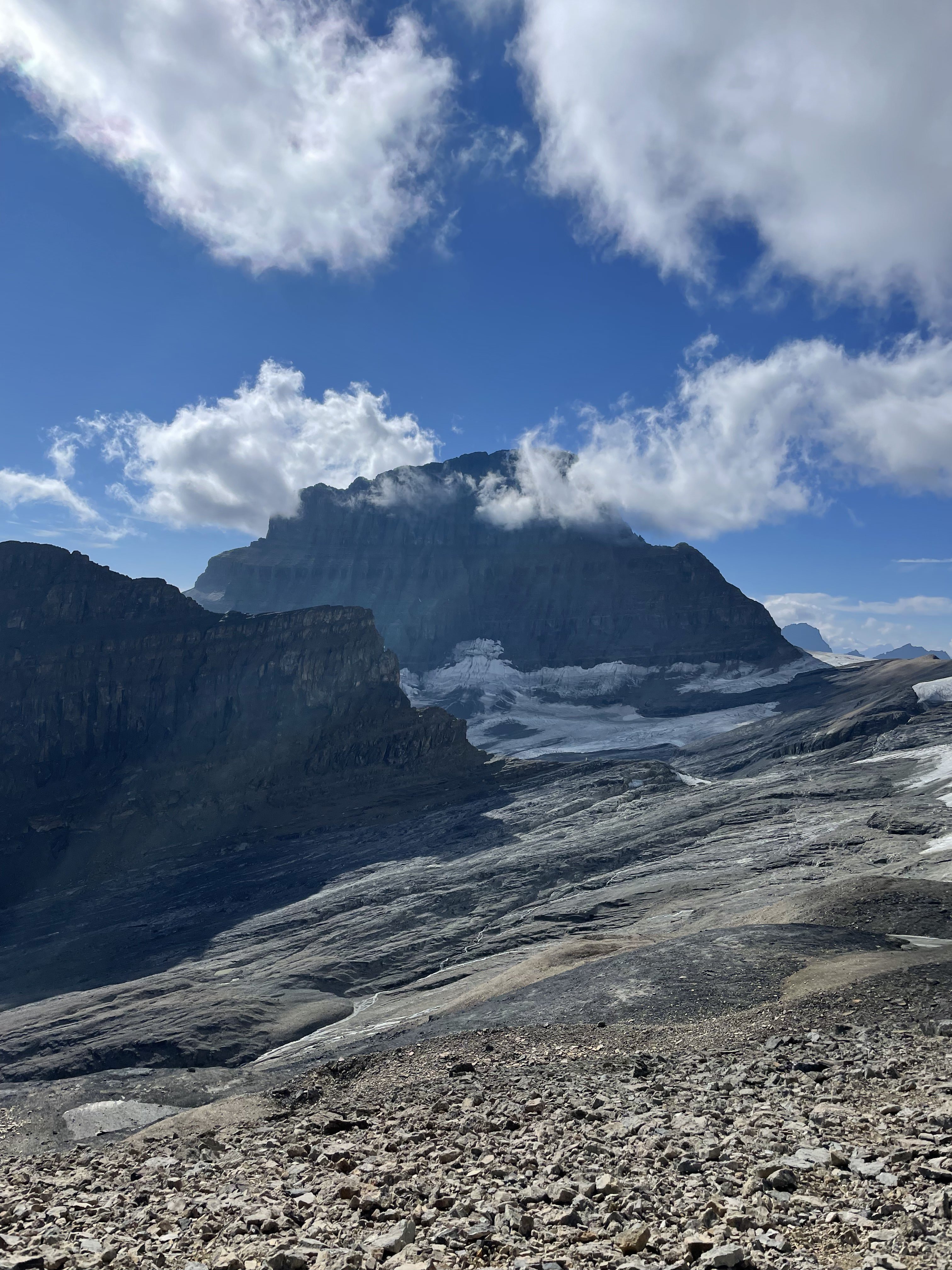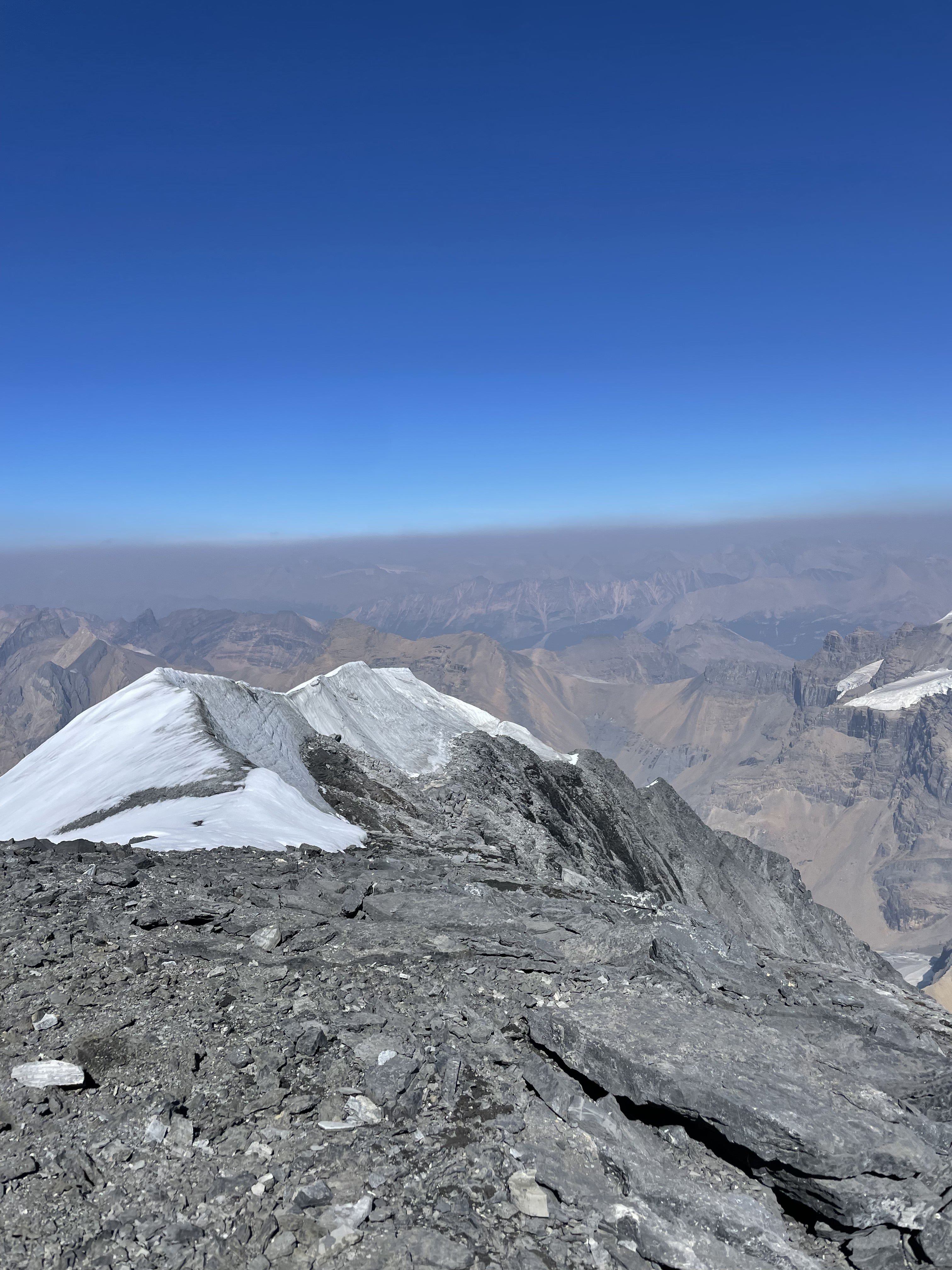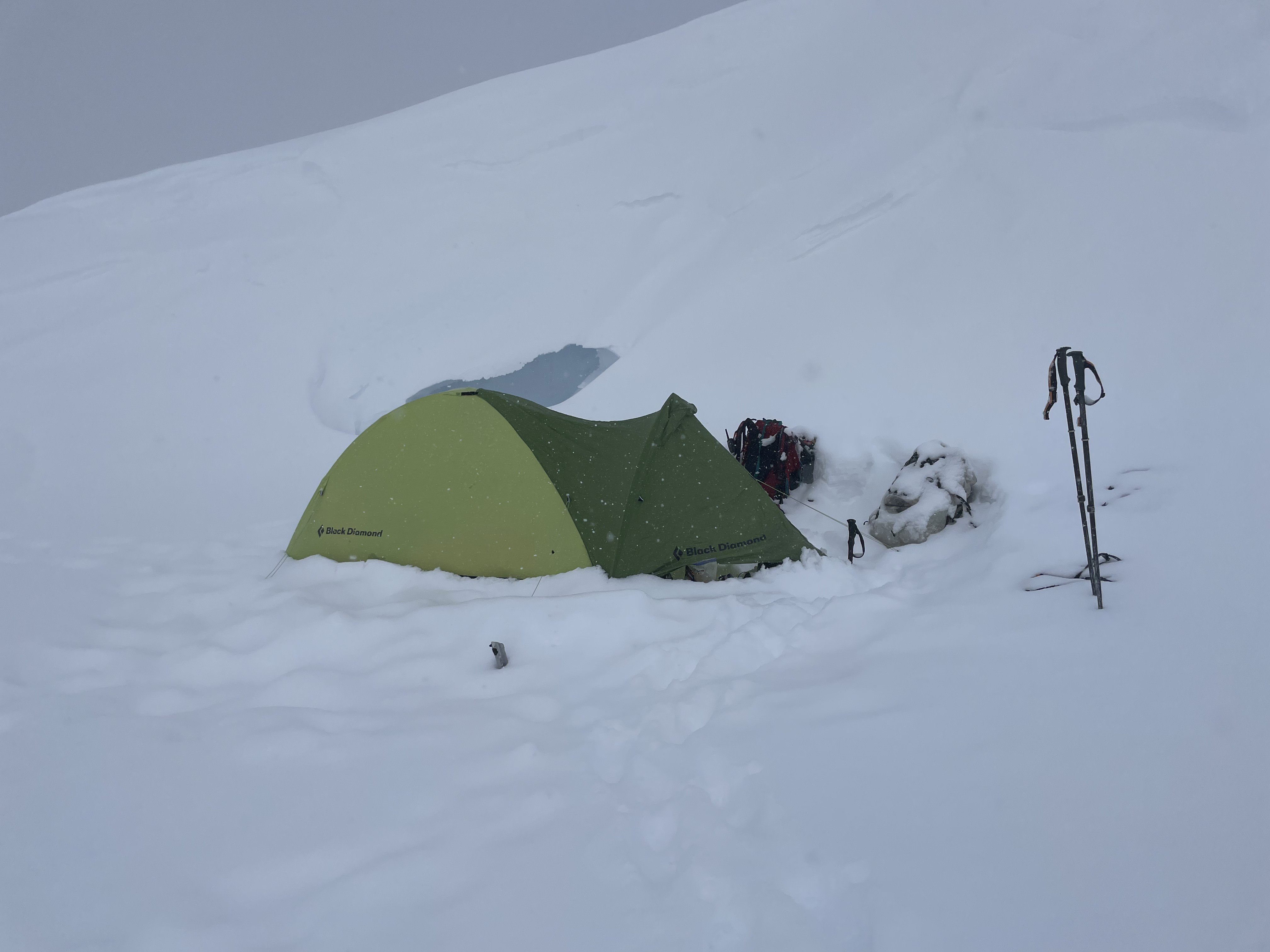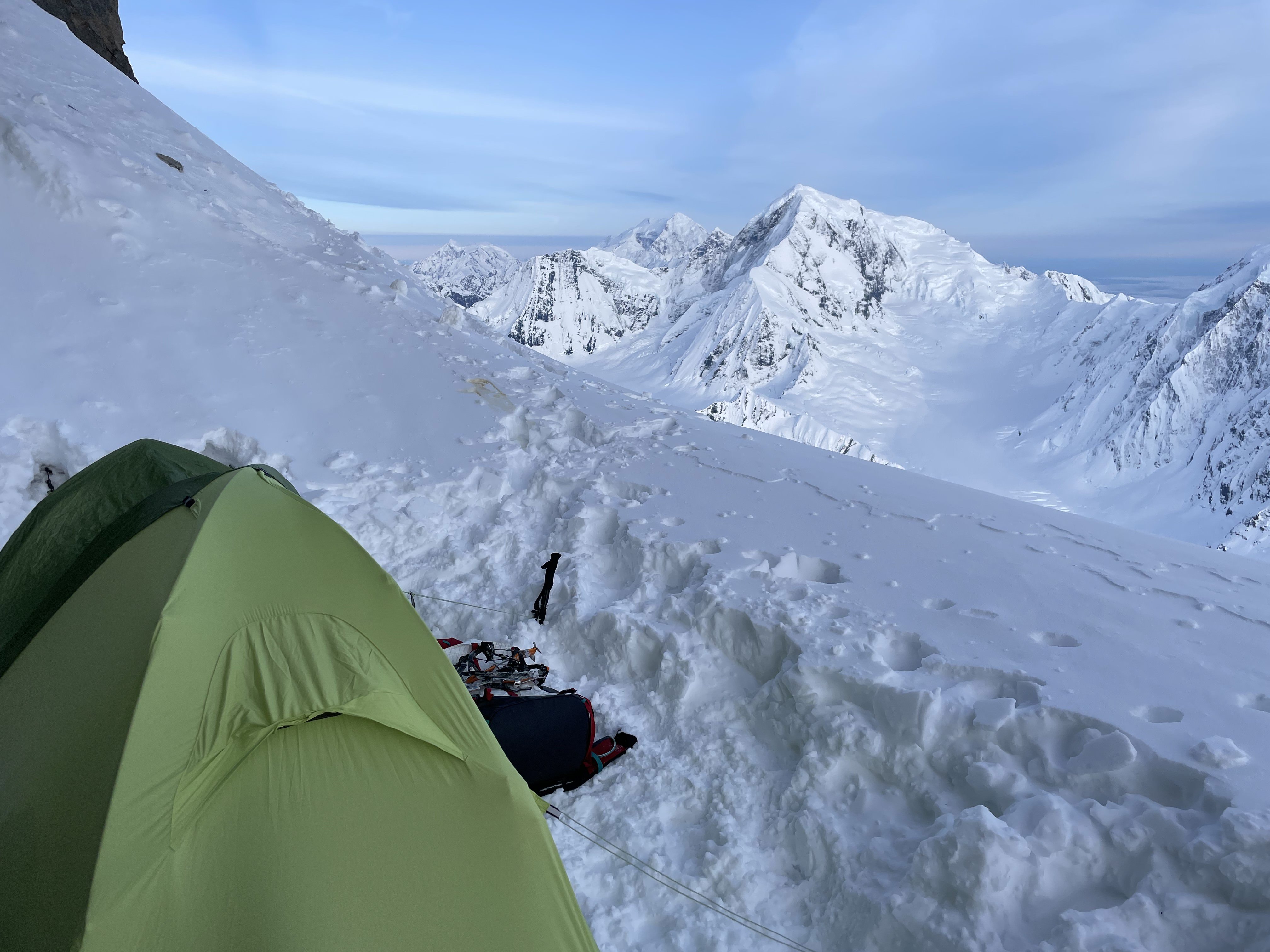Leaderboard
Popular Content
Showing content with the highest reputation on 06/04/24 in all areas
-
Ian and I left Chelan at 3:30pm on Thursday before Labor day and drove North towards Kelowna. We were intending to climb something on Mount Robson, but the the afternoon update on Mountain Forecast just did not leave us the window we were hoping for. At the last possible turn-off, we switched to our backup objective. Total drive time was around 12 hours since we took the Orville border crossing and there were some detours due to the ongoing forest fires. We stopped in a state park boat launch parking area to sleep from 10pm-5am, then resumed driving until we reached the pullout on Icefeilds Parkway at 11:30am MTN. We re-packed for our new objective and started out wading across the braided Sunwapta river. The deepest section was only around thigh-deep this time of year but the water was icy cold. We ditched our wet shoes and a few excess items, then started up the steep forested trail next to Woolley Creek. The trail was very obvious, and we had downloaded a gpx track I found from Steven Song. The trail followed the creek up above the treeline, then across a series of steep rocky inclines and rocky plateaus. All of this was well marked with cairns. Once we reached the head of the valley at around 8,000’, we filled up water and took in the incredible views of Woolley & Diadem peaks and the glaciers clinging to their steep cliffs. From 8000’ up to 9,400’, the trail gets steep and loose, which is indicative of the rest of the route. We slogged up the inconsistent loose/solid scree and reached the top of the pass around 4pm. As soon as we crested the pass, we were smacked in the face by 40mph winds and our first view of the intimidating East face of Mount Alberta. The Lloyd Mackay hut was 800’ below as well, but we had plenty of daylight to get there. We descended scree, then traversed wet, gravel covered slabs and finally ascended 100’ up to the hut and outhouse. The hut is small with similar amenities to the hut on Mount Assiniboine. Since it was only 5pm, we decided to descend the 800’ additional into the valley below and find a bivy site. After reaching the valley floor, we decided to filter water and build a small new bivy site on a few flat-ish boulders. We were in our sleeping bags by 8pm, and up at 6:30am the next morning (sunrise was 7am). We left our bivy gear and started up the lower scree slope. After 700’ or so, we followed a ledge due South until we reached a short 4th class gully that lead to another 1000’ of scree or so. From this, we ascended another 4th class gully, and traversed NE and up across increasingly loose scree. At around 9,500’, we entered a long 4th class gully which we climbed inside of and on the adjacent rock bands. At the top of the gully around 10,000’, we traversed on a ledge marked by cairns around several rock ribs until we could go no further, and started heading upward towards a rap anchor. This was where we found the first 5.6 pitch which was not difficult, but worth bringing out ropes/helmets for. I belayed Ian as he lead up on our 42m rope, and we started swapping leads from here. There is a ton of loose but easy 5th class climbing, and we essentially tried to move from rap anchor to rap anchor until reaching the ridge crest at 11,400’. It took us around 7 hours to reach the ridge from camp. There had to be 10+ (short) pitches of us simuling and swapping leads with our short rope and it was far more time consuming than I had hoped. The ridge traverse is also very long, and very exposed. There is rappel around 3/4 of the way to the summit. We left our rope hanging there for the way back. The exposure is very intimidating all along. We reached the summit at 3pm, took some drone footage, then reversed the ridge. From there, it was a mix of careful rappelling and tedious downclimbing due to our rope not being full length. We finally reached the base of our 15 rappels or so at 7:30, and made the loose descent to our bivy site just before dark at 9:15pm. The mental relief of getting back to camp was immense. We quickly filtered water, ate food, and went straight to bed. We awoke around 4:30am being pelted by rain, and scrambled to pack up our belongings and make a charge for the hut, which we reached at 5:30. We ate breakfast and power napped until 9:30. From there we hiked up and over the pass in the wind and howling rain, and made the horrible descent from there back down to 8000’. This was the most miserable part of the trip due to the inconsistency of the rock quality. I snapped both trekking poles descending the pass. From there, we donned our shells and made the final soaking wet slog down to the Sunwapta river. The crossing was higher than last time, about waist deep but we managed just fine. We reached the truck at 2pm on Sunday and started the long drive back. Overall, this climb’s location is incredible, and the views of Mount Columbia and its massive icefeild were unforgettable. The massive avalanches spilling over the cliffs in the background make for a wild and intimidating setting that none of the icefeild parkway motorists will ever experience. The climbing itself mostly sucked, and even though the grade is low, it is mentally taxing for a full day with a tedious approach/deproach. Our lesson learned from this climb: bring a full length rope for the big objectives. A video of our climb: Our gear list: https://www.packwizard.com/s/NUcioL6 GPX: https://www.alltrails.com/explore/recording/mount-alberta-japanese-route-cd61a582 points
-
“The horse is made ready for the day of battle, but victory rests with the Lord.” Proverbs 21:31 After packing gear on Sunday and making final preparations, Ian and I left my house Monday afternoon 5/20 and drove over to Seattle for our flight to Juneau. We hired an Uber from the Juneau airport to the ferry terminal, and took the midnight boat arriving to Haines at 4:30am. From there, we caught a taxi to the Haines airport and organized/packed gear. The famous “Fly Drake” arrived around 7am and we took off around 8am with “Bad to The Bone” playing over the headsets. I had been coordinating with Drake for several months, and have found him to be very experienced, and a well-known figure in the climbing community. I tried to eek out what advice I could regarding weather, gear, and strategies without coming across as a completely inexperienced noob. At one point I suggested going fast-and-light up the Carpe Ridge and down the other side to Grand Plateau Glacier, which Drake seemed to think was a reasonable idea although he did not know of anyone who had done it before. At the time I liked this approach. It has two huge advantages: much shorter non-technical descent, and potential better conditions for Drake to pick us up. Its disadvantages included not being able to set up a base camp with extra fuel, or any sort of luxury items. Even the bare essentials for a climb of this magnitude added up to 55lb packs each, and we are always trying to improve on that number. No base camp means less supplies, and less supplies puts Drake in a tough situation. I have heard several stories of Drake taking a risk to pick up climbers who are out of fuel, food, or just scared in a difficult situation (often due to their own unpreparedness) even though he shouldn’t be obligated to. The guy certainly takes a lot of personal responsibility for the people he flies into the range, and I’m sure that is mentally taxing considering the inexperience and risk involved with some of his client’s activities. I did not want to be one of those clients, and we took in enough food for 5+ fat days. That might seem on the very slim side, but I am very confident in Ian and I’s ability to climb fast when we need to, and also stretch food out if needed. On Tuesday 5/21, weather was perfect for the glacier flight. That is a rarity in the Fairweather range. I had booked everything months in advance, but kept the door open to change flights at the last second if needed to take advantage of changing weather windows. Luckily, things worked out on the exact days we had planned them. The flight to Fairweather Glacier was spectacular. The surrounding peaks are huge, due to the fact that they rise from a very low base elevation. Our views from the air revealed the Carpe to be in excellent climbing condition. Mostly snow travel with a few easy looking rock steps. We landed at 4,700’ and evaluated snow conditions. We decided to leave skis in the plane to save weight. This turned out to be the right choice, as skis would add another 6lbs to our 55lb packs. We immediately started walking across the glacier to the base of the ridge, roping up and avoiding a few very large crevasses. We accessed the ridge via a snow ramp on the right. This lead up around 1,000’ until we reached a low 5th class rock gully. We climbed this (in ski boots, not our forte) for a few hundred feet until it dumped us onto the snowfield below the first of four sarac hazards. It is important to mention that this route is massive. Over 11k' long, I found it helpful to mentally divide the route between 4,500’-11,000’ into four sections. Each section has a serac at the top that we would have to bypass. A lot of our route decisions were based on avoiding the fall line of these seracs as much as possible. Especially considering how clear and sunny it was on our way to camp 1. The first serac we bypassed on the right, then we continued up just outside the fall line of the second serac, passing it on the right as well. There was a rock band that was about even with the second serac that had some 4th class rock scrambling, which we solo’d. We then ascended another steep snow field to the base of the cliffs that make up the ridge crest between 9-10,000’. This takes you to a lower angle snowfield just on top of the 3rd serac wall. We made our first camp at 10,500’ at the base of some formidable looking cliffs that blocked our route up the ridge. This was a flat and somewhat sheltered camp spot, but it was in between two shallow crevasses which made for limited space. We went to bed around 9pm just after it started snowing. It snowed/slushed all night and the next morning through very warm temps. While we were stuck in the tent, we studied some of Ian’s excellent arial photographs and determined our best chance of getting around the cliffs would be to traverse horizontally about 1/2 mile to the right, and climb a steep snow gully past the 4th and final serac wall. My brother Noah sent us a forecast showing a clear weather window for a few hours in the afternoon/evening, so we used that time to push up to another great camp site at 12,200’. On day 3, it again snowed lightly all night and the next morning/afternoon. Around 4pm, the snowfall slowed and we decided to make another short push. We ascended the seemingly endless steep snow up toward the false summit, with Ian breaking trail much of the way. We were both starting to feel the altitude, and were moving much slower than we usually do. The combined vertical gain of the route over slushy snow conditions, high altitude, with heavy packs really had a cumulative effect and we felt very fatigued. Just before reaching the false summit, we started the long leftward traverse and descended down to the col at 13,600’. The ridge here was wide, but had massive cornices. Some of them starting to break away from the ridge leaving huge cracks for us to avoid. From the col we got our first glimpse of the “ice nose”, and realized it would certainly be the crux of the route. In the interest of saving time on Friday, we pushed up a bit further to 13,800’ and camped at the saddle just below the ice nose before that night’s high winds set in. The next morning, we were up at 3am and on our way towards steep ice at 5am. We went back and forth trying to decide whether the ice nose was better passed on the left or right, but eventually decided to follow the 50 Classics guidebook advice and go left. I would not say it was bypassed easily however. We swapped leads for 3 pitches of 70 degree blue ice, then popped out on the upper snow fields. Finally success was assured, and the summit was in sight. We weaved our way through the crevasse maze of the upper mountain and popped out on its rounded summit just before 10am. Unfortunately, there was an undercast around 3000’ hiding the iconic ocean views, but we could see Mount Logan and St. Elias to the North. Weather was windy, and I would estimate ambient was around -10 degrees. I was cold even in my big parka. After taking photos, we started back down the standard route towards the Grand Plateau. The descent route was less steep than the Carpe, but is also covered in crevasses forcing us to zig-zag quite a bit. We punched through a few crevasses up to our knees or waist, but they all seemed to be mostly filled with snow and ice still this early in the year. Once we reached the col at 13k, I messaged drake via inReach and let him know we were only a couple hours from the landing zone. Unfortunately, the snow below the col was consistently shin to knee deep all the way down, and was slow going. By the time we reached 11k we were very tired. I sent drake some more conditions information and he said he was on his way. It was at this point I realized that we never set up coordinates for an exact pick up location. I messaged him asking if the flat area at 10,500’ was sufficient, but it was too late. We waited just below 10,500’ and as Drake was arriving, wind was picking up and the undercast clouds were quickly rising. Drake managed to land nearby, but he was not pleased with our pick-up location choice. Lesson learned, I should have been more thorough with my questions prior to getting on the glacier. We quickly threw everything in the plane, and Drake really seemed to put his pilot expertise to the test getting off the ground. It took a long time, especially with a direct tail wind, to get airborne. We finally lifted off just as we passed over a massive crevasse that could have easily swallowed the plane. Once we were back up in the air, we were incredibly relieved. We all agreed that is not a situation that we would like to repeat. We landed back in Haines around 2:15pm and quickly packed gear, called a taxi, and made it back to the dock for the 3:15 ferry. We then reversed the rest of our travel itinerary and arrived back in Wenatchee at 3pm on Saturday. In summary, I think Carpe Ridge is a desirable climb due in most part to its sheer size and position. There are some other huge ridge climbs in the Fairweather range that look quite appealing, but none of them can compete with the Carpe for sheer size. I’m glad with the general ease with which this trip worked out, and thankful for the positive conditions we experienced. We learned a lot, and certainly affirmed a lot of our gear decisions and tactics that we can now put to the test on bigger objectives. On this climb even more than others, I had the persisting feeling that God provided for us a beautiful setting and orchestrated the weather for us to witness his creation. I am also starting to realize that God has given Ian and I a narrow skill-set that is uniquely applied to alpine climbing. There is just something about putting all the tools in my toolbox to use in a high consequence environment that leaves me with an incredible sense of accomplishment. Of course, in the end God will always have control over our successes and failures, but he has certainly granted Ian and I a great success on this trip. AllTrails: https://www.alltrails.com/explore/recording/afternoon-hike-a3ec6dd-353?u=i&sh=emzgdu Pack Wizard https://www.packwizard.com/s/7x5UAWS Wondering if I should retro-actively post a few of our other trip reports here on CC? Or would that be bad form? I have been struggling to create an account for a while now and finally got it to work.1 point
-
1 point
-
Cool climb and write up. I love these Canadian TRs popping up recently.1 point

